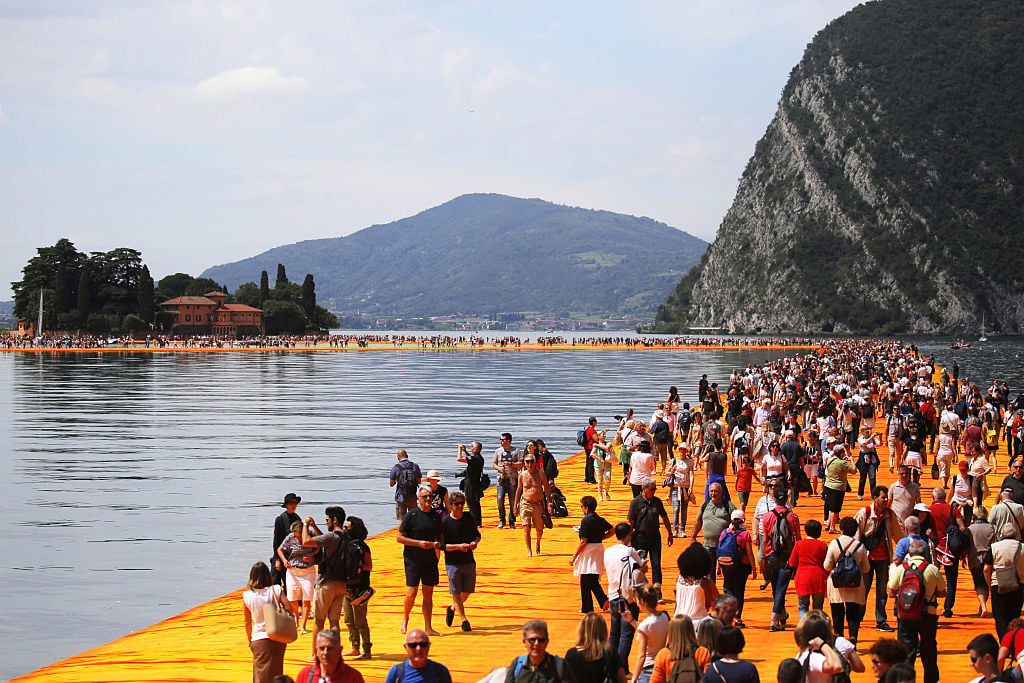
Interest in Christo’s new project The Floating Piers on Lake Iseo in northern Italy has left approximately 3,000 people stranded at a train station in the nearby city of Brescia.
Local authorities stopped visitors from continuing their journey towards the lake because of massive overcrowding within the region, Art Magazin reports, citing the Italian news agency Ansa.
Christo (right) with The Floating Piers Project Director Germano Celant (center) and Vladimir Yavachev (left), July 2014. Courtesy Wolfgang Volz © 2014 Christo.
The installation artist’s project opened on Saturday, June 18, attracting 55,000 visitors on the first day. Throughout the weekend, train and ferry services were repeatedly interrupted by a steady stream of people hoping to experience the unique artwork.
Related: See the Incredible First Images of Christo’s Floating Piers on Italy’s Lake Iseo
The 81-year-old artist and his team constructed three kilometers of piers connecting the town of Sulzano with the island of Monte Isola and the small isle of San Paolo. The piers are composed of 220,000 individual buoyant plastic cubes covered in bright yellow fabric. The installation is intended to mimic the feeling of walking on water.
People walk on the monumental installation on June 18, 2016. Courtesy of MARCO BERTORELLO/AFP/Getty Images.
In a statement on his website, Christo assured visitors, “The Floating Piers is absolutely free and accessible 24 hours a day, weather permitting. There are no tickets, no openings, no reservations and no owners. The Floating Piers are an extension of the street and belong to everyone.”
Related: artnet Asks Epic Environmental Artist Christo
However, organizers announced that the installation will temporarily close from midnight on Thursday until 7:30 a.m. on Friday for essential maintenance work.
People flocking to Christo’s latest project. Courtesy of MARCO BERTORELLO/AFP/Getty Images.
The project was first conceived in 1970 by Christo and his late partner Jeanne-Claude, but the complex nature of the artwork required decades of planning before it could finally be executed.
The massive installation is scheduled to run through July 3, if weather permits.